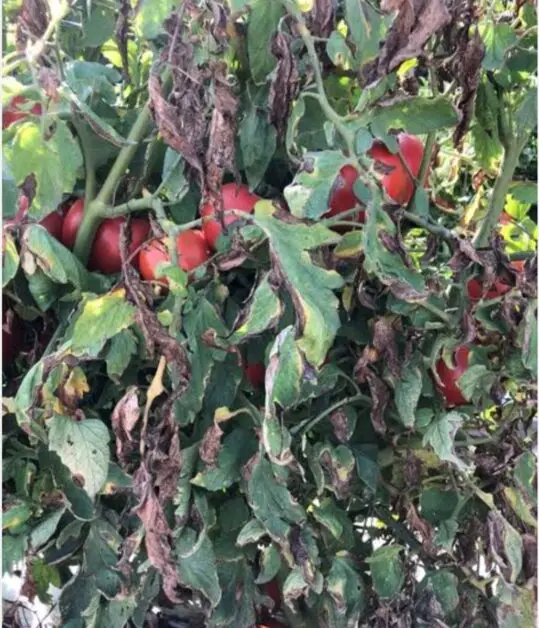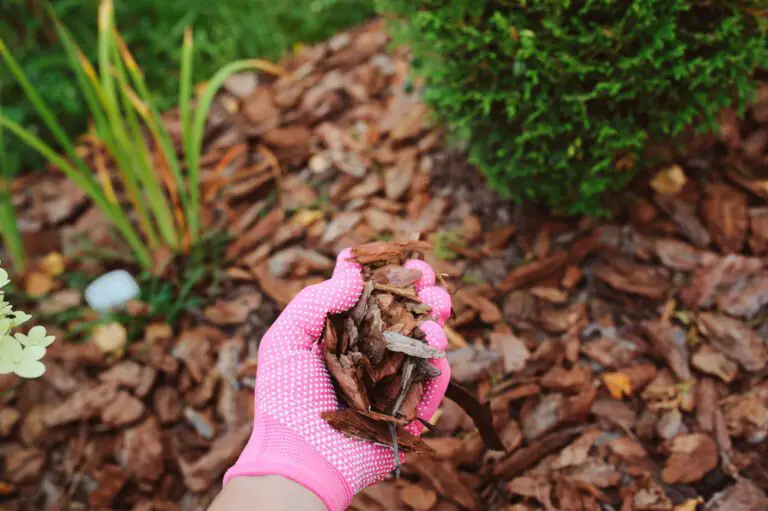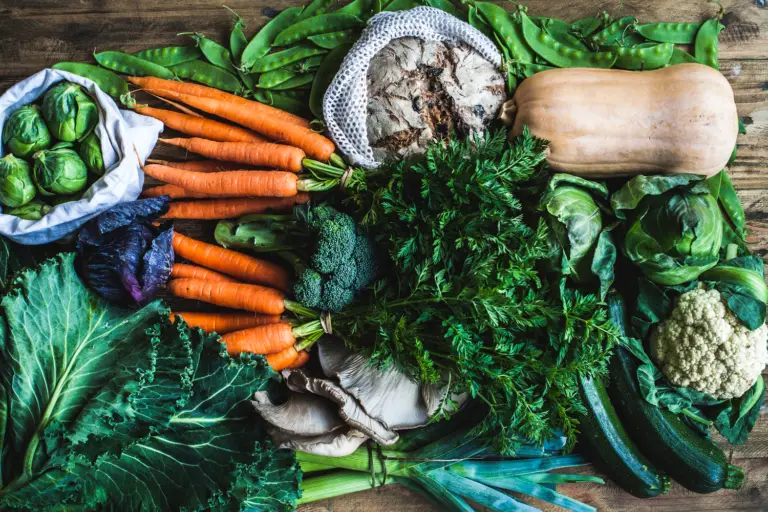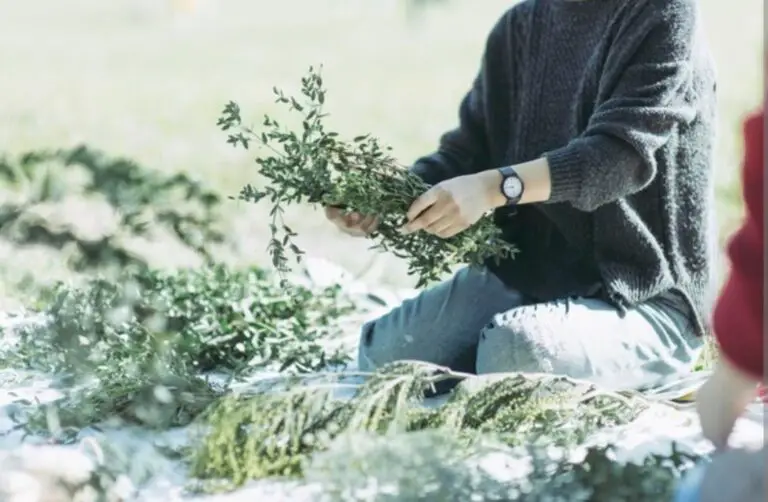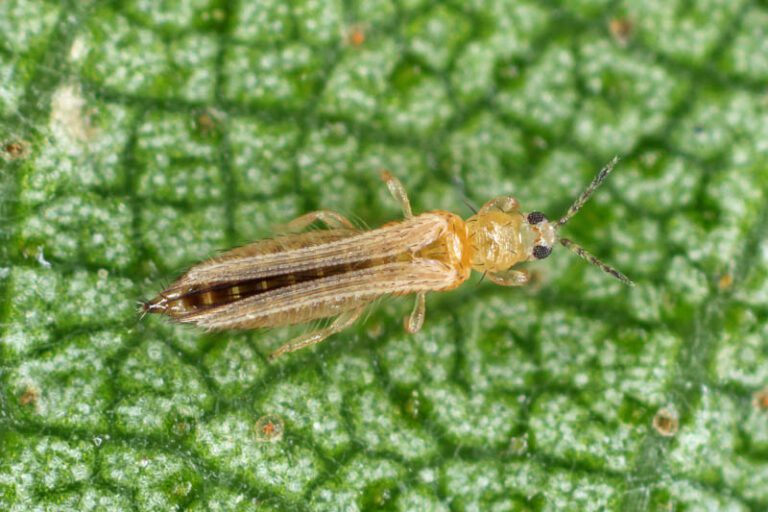How to Identify and Treat Verticillium Wilt in Your Plants
Table of Contents
Understanding Verticillium Wilt: An Overview of the Disease
Verticillium wilt is a devastating disease that affects a wide range of plants, including trees, shrubs, and vegetables. Caused by the soil-borne fungi Verticillium dahliae and Verticillium albo-atrum, this disease can have significant economic implications for crop production and landscape management. Understanding the basics of this disease is crucial for gardeners and agriculturists alike.
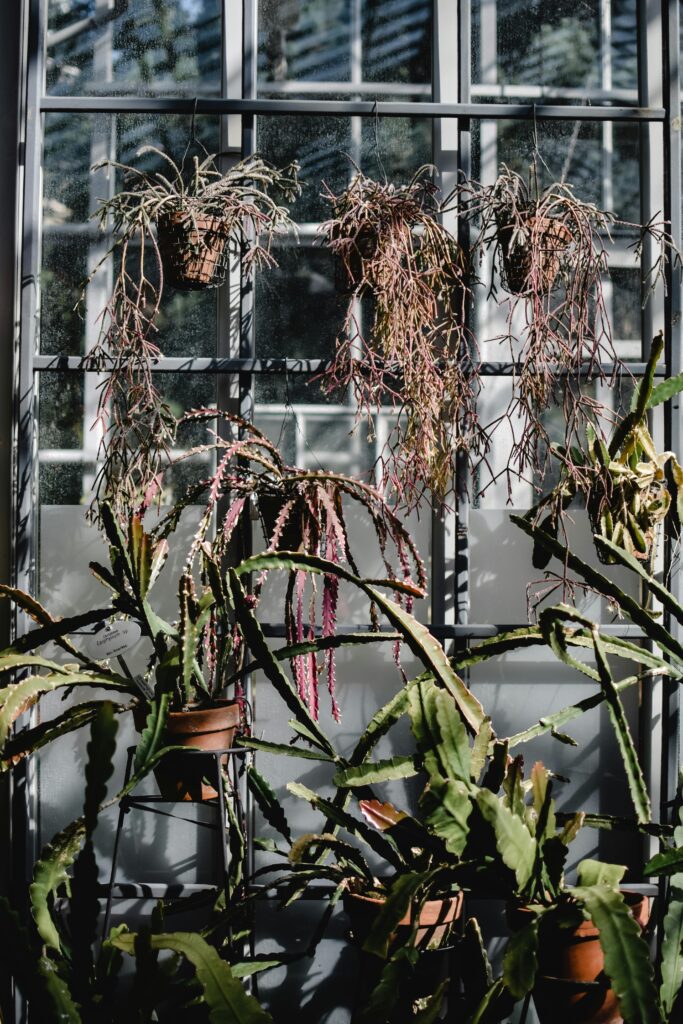
One of the defining characteristics of Verticillium wilt is its ability to persist in the soil for several years, making it a challenging disease to manage. The pathogens invade the plant’s vascular system, blocking the flow of water and nutrients, which ultimately leads to wilting, yellowing, and necrosis of the leaves. The initial symptoms often appear on the lower leaves and gradually progress upward, causing stunted growth and eventual death of the plant. It is important to note that Verticillium wilt symptoms may vary depending on the host plant species, weather conditions, and the virulence of the fungal strains involved.
To effectively combat Verticillium wilt, it is crucial to implement a systematic approach that includes proper diagnosis, prevention measures, and management strategies. This overview of the disease serves as a foundation to delve into the various aspects of Verticillium wilt to equip gardeners and agricultural professionals with the knowledge needed to protect their plants and make informed decisions in disease management. By understanding the basics of this disease, we can develop effective strategies to mitigate its impact and ensure the health and vitality of our plants.
Recognizing Symptoms of Verticillium Wilt in Your Plants
Symptoms of Verticillium wilt can vary depending on the type of plant affected, but there are some common signs to watch out for. One of the first indications of this disease is wilting and yellowing of the leaves, typically starting from the lower parts of the plant. This wilting is often seen during the hottest part of the day and may seem to improve overnight, only to worsen again the next day.
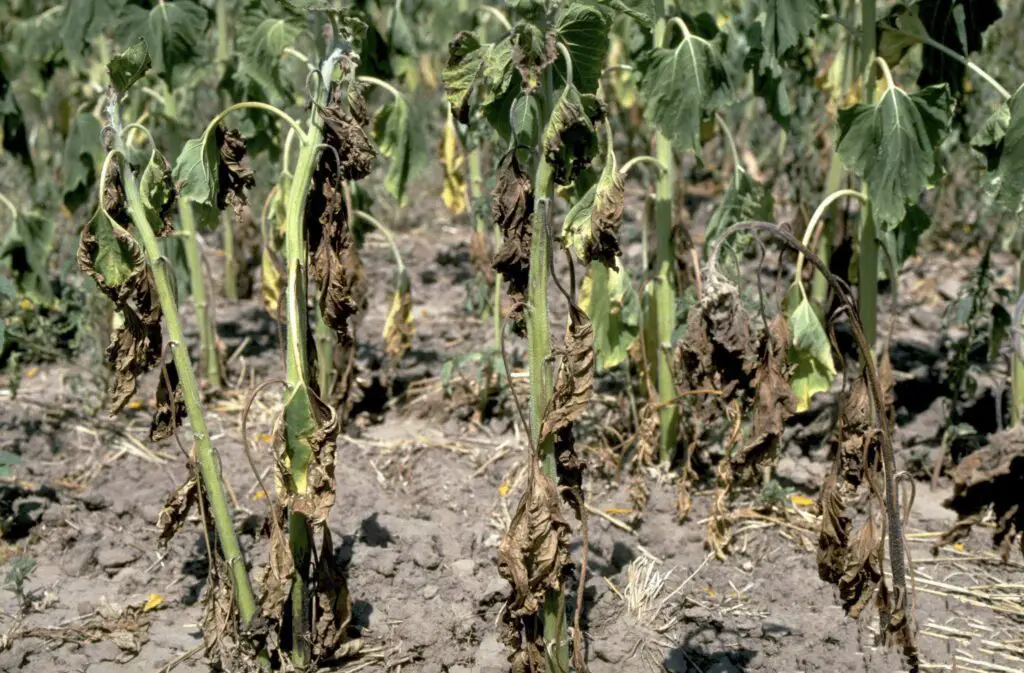
As the disease progresses, you may notice that the leaves develop brown or black streaks or patches, usually starting at the edges and moving inward. In some cases, the entire plant may brown and die back. Additionally, you may observe a reduction in the overall vigor of the plant, with stunted growth and decreased fruit production.
It is worth noting that these symptoms can be similar to those caused by other plant diseases or environmental stress factors. Therefore, it is crucial to conduct a proper diagnosis to confirm the presence of Verticillium wilt before implementing any management strategies.
Conducting a Proper Diagnosis: Confirming Verticillium Wilt
Verticillium wilt is a fungal disease that affects a wide range of plants, including vegetables, fruits, and ornamentals. To effectively confirm if your plants are indeed infected with Verticillium wilt, a proper diagnosis is crucial. Conducting a thorough diagnosis will not only help you accurately identify the disease, but also determine the best course of action to manage and control it.
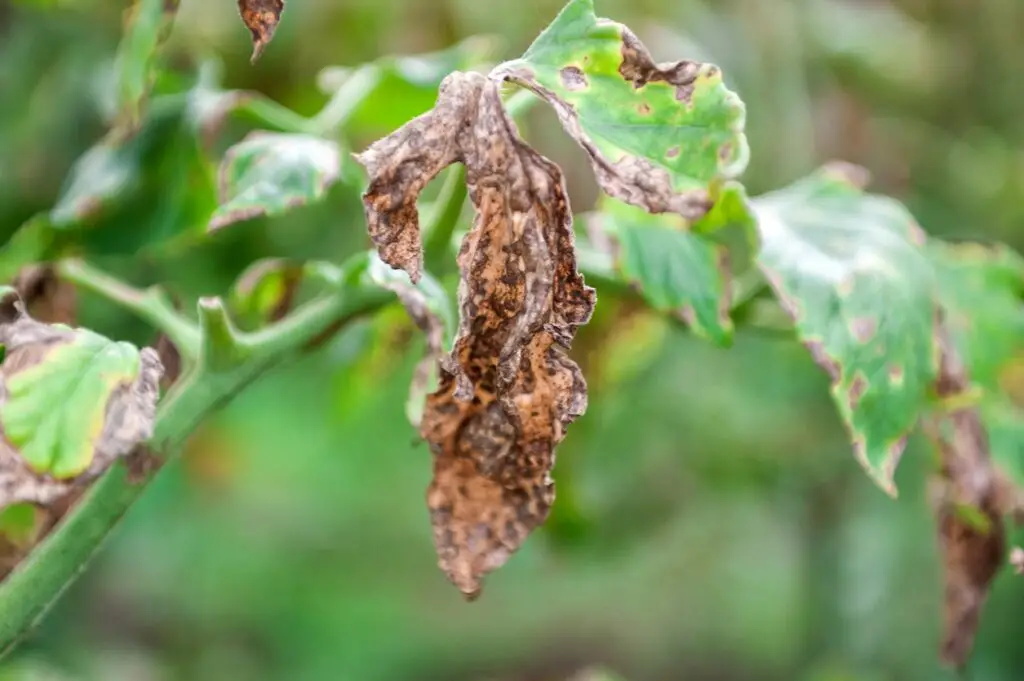
One of the first steps in diagnosing Verticillium wilt is to examine the symptoms exhibited by the plants. Look for wilting, yellowing, or browning of leaves, as well as stunted growth or overall decline in plant vigor. These symptoms are not exclusive to Verticillium wilt, so it is essential to pay attention to additional signs. Cut open the main stem of the plant and inspect for discoloration or brown streaks in the vascular tissue. This is a key diagnostic feature of Verticillium wilt, as the fungus colonizes the plant’s vascular system, interrupting the flow of water and nutrients. Correctly identifying these symptoms will help confirm the presence of Verticillium wilt and guide you towards the appropriate management strategies.
A proper diagnosis of Verticillium wilt requires taking into account various factors such as plant species, environmental conditions, and history of the affected plants. It is recommended to consult with a plant pathologist or extension specialist who has expertise in diagnosing plant diseases. They can perform laboratory tests, such as culturing the fungus from affected plant tissues or using immunological techniques to detect the presence of the pathogen. These specialized diagnostic methods can provide definitive confirmation of Verticillium wilt and enable you to make informed decisions on how to proceed with effective management.
Identifying Plants Susceptible to Verticillium Wilt
Plants in the Solanaceae family, such as tomatoes, peppers, and potatoes, are particularly susceptible to Verticillium wilt. This fungal disease can cause significant damage to these crops, leading to reduced yields and even plant death. Other susceptible plants include strawberries, eggplants, and cucumbers. It is important for gardeners and farmers to be aware of these susceptible plants, as early identification and preventive measures can help mitigate the impact of Verticillium wilt.
| Plant Species | Susceptibility to Verticillium Wilt |
|---|---|
| Tomato | High |
| Potato | Moderate |
| Eggplant | High |
| Pepper | Moderate |
| Strawberry | High |
| Cotton | High |
| Olive | Moderate |
| Sunflower | Low |
| Maple Trees | High |
| Oak Trees | Low |
In addition to the Solanaceae family, certain ornamental plants are also vulnerable to Verticillium wilt. This disease can affect a wide range of trees, including maples, ashes, and elms. Shrubs like lilacs, hydrangeas, and viburnums are also at risk. Recognizing the susceptibilities of these plants is crucial in managing the spread of Verticillium wilt and protecting the overall health of your garden or landscape. By being proactive and identifying plants that are prone to this disease, you can take appropriate measures to prevent its occurrence and minimize the potential damage it may cause.
Preventing Verticillium Wilt: Best Practices for Plant Care
Proper plant care is essential in preventing the onset of Verticillium wilt, a devastating fungal disease that affects a wide range of ornamental and agricultural plants. By following best practices for plant care, gardeners can create an environment that is less conducive to the growth and spread of the Verticillium fungus, thereby reducing the risk of infection and subsequent damage to their plants.
One of the fundamental aspects of preventing Verticillium wilt is maintaining the overall health and vigor of plants. Strong and healthy plants are more resilient to diseases and better equipped to fight off infection. This can be achieved through regular monitoring and assessment of plants, ensuring optimal nutrient levels and watering practices, and promptly addressing any signs of stress, such as nutrient deficiencies or pest infestations. Additionally, providing plants with proper air circulation and adequate spacing can help reduce humidity levels, minimizing the conditions that favor fungal growth.
Implementing Cultural Control Measures to Manage Verticillium Wilt
Implementing cultural control measures is an essential aspect of managing Verticillium wilt in your plants. By focusing on cultural practices, you can create an environment that is less conducive to the growth and spread of the disease. One of the first steps is to ensure proper sanitation in your garden or growing area. Start by removing and destroying any infected plant material, including fallen leaves or branches. This will help minimize the presence of the Verticillium wilt fungus and prevent its spread.
Here are cultural control measures to manage Verticillium Wilt presented in bullet points:
- Crop Rotation:
- Rotate susceptible crops with non-host plants to break the disease cycle.
- Avoid planting the same crop or its close relatives in the same location for consecutive seasons.
- Resistant Varieties:
- Choose and plant resistant varieties when available.
- Look for plant varieties bred to resist or tolerate Verticillium Wilt.
- Soil Solarization:
- Solarize the soil by covering it with clear plastic during hot months to heat and kill pathogens.
- Sanitation Practices:
- Remove and destroy infected plant debris promptly to reduce inoculum.
- Practice good sanitation to prevent the spread of the pathogen.
- Healthy Soil Practices:
- Maintain well-draining soil to reduce moisture, as Verticillium thrives in wet conditions.
- Add organic matter to improve soil structure and promote beneficial microorganisms.
- Avoid Stress Conditions:
- Provide optimal water and nutrient levels to minimize plant stress.
- Avoid excessive pruning or other practices that may weaken plants.
- Monitoring and Early Detection:
- Regularly inspect plants for symptoms of Verticillium Wilt.
- Quickly remove and isolate infected plants to prevent further spread.
In addition, practicing crop rotation can be highly effective in managing Verticillium wilt. Rotate susceptible plants with non-host species to disrupt the buildup of the disease in the soil. This technique is particularly useful in larger gardens or agricultural fields where you can allocate different areas for different plant families. By spacing out susceptible plants over a three to five-year rotation period, you can reduce the risk of Verticillium wilt and allow the soil to naturally recover. However, keep in mind that some plants, such as tomatoes or potatoes, are more susceptible to the disease and should be avoided in rotation schedules if Verticillium wilt has been a persistent issue.
By employing these cultural control measures, you can significantly reduce the impact of Verticillium wilt in your garden or growing operation. However, it’s important to remember that cultural practices should be used in conjunction with other management strategies for optimal results. In the next sections, we will explore additional methods such as utilizing resistant plant varieties and understanding soil sterilization techniques to further combat Verticillium wilt and safeguard your plants.
Utilizing Resistant Plant Varieties to Combat Verticillium Wilt
Utilizing resistant plant varieties is a key strategy in combating Verticillium wilt, a destructive disease that affects a wide range of plants. Resistant varieties are those that have been specifically bred or selected for their ability to withstand infection by Verticillium fungi.
One of the most effective ways to combat Verticillium wilt is by selecting and planting resistant plant varieties. These varieties have been developed through careful breeding programs that target specific genetic traits known to confer resistance. By choosing resistant varieties, gardeners can significantly reduce the risk of Verticillium wilt and ensure the long-term health and productivity of their plants.
Resistant varieties offer a number of advantages over susceptible ones. Firstly, they remain unaffected by Verticillium wilt, even in the presence of the disease-causing fungi. This means that gardeners can continue to enjoy healthy plants and bountiful harvests without the need for costly and time-consuming disease management practices. Additionally, resistant varieties can help prevent the spread of Verticillium wilt within gardens or agricultural fields, as the fungi struggle to survive and reproduce on these plants. In essence, utilizing resistant plant varieties is a proactive and sustainable approach to managing Verticillium wilt, offering both short-term benefits and long-term disease control.
The Role of Crop Rotation in Preventing Verticillium Wilt
Crop rotation plays a crucial role in preventing the spread and recurrence of Verticillium wilt in agricultural systems. By strategically rotating crops, farmers can disrupt the disease’s life cycle and significantly reduce its impact on future plantings. The principle behind crop rotation is to alternate different plant families in a specific sequence over several years, which helps break the cycle of Verticillium wilt and other soilborne pathogens.
One of the main benefits of crop rotation in preventing Verticillium wilt is the reduction in the pathogen’s inoculum levels. By introducing non-host plants or crops that are less susceptible to the disease, farmers can starve the Verticillium fungus of its primary food source. This break in the pathogen’s lifecycle interrupts its reproduction and growth, leading to a decline in disease severity over time. Additionally, rotating crops can enhance soil biodiversity, promote beneficial microbial activity, and improve overall soil health, creating conditions that are less favorable for Verticillium wilt development.
To implement an effective crop rotation strategy, it is crucial to consider several key factors. Firstly, choose crop species and varieties that are not susceptible to Verticillium wilt and ensure they are not closely related to susceptible plants. Adequate spacing between rotations is essential to minimize the risk of disease transmission, as some Verticillium strains can survive in the soil for several years. It is also advisable to avoid excessive tillage, as this can inadvertently spread the pathogen throughout the field. By carefully planning and implementing a well-designed rotation scheme, farmers can significantly reduce the incidence and severity of Verticillium wilt, promoting healthier crops and more sustainable agricultural practices.
Understanding Soil Sterilization Techniques for Verticillium Wilt Control
Soil sterilization techniques for controlling Verticillium wilt are effective methods to reduce the impact of this devastating disease on plants. Soil sterilization refers to the process of eliminating or significantly reducing the population of harmful microorganisms, including the Verticillium fungus, in the soil. This technique helps create a clean growing environment, reducing the chances of infection and preventing the spread of the disease.
One of the most commonly used soil sterilization techniques is heat treatment. Heat can be applied through steam or solarization to kill the pathogens present in the soil. Steam sterilization involves the use of steam to raise the soil temperature to lethal levels for the fungus. Solarization, on the other hand, utilizes the sun’s heat to raise the temperature of the soil, effectively killing off pathogens. Both methods require careful monitoring and appropriate temperature management to ensure successful sterilization without damaging desirable microorganisms or the soil structure.
Another soil sterilization technique is fumigation, which involves the application of chemical compounds to kill the Verticillium fungus in the soil. However, it is important to note that chemical fumigation methods are generally reserved for commercial applications or in extreme cases where other strategies have failed, as they can have negative impacts on beneficial soil organisms, as well as human and environmental health. It is recommended to consult with experts or agricultural extension services for guidance on the appropriate and safe use of fumigation in controlling Verticillium wilt.
By employing soil sterilization techniques, gardeners and farmers can effectively control Verticillium wilt and protect their plants from the damaging effects of this disease. However, it is crucial to understand that sterilization alone may not entirely eliminate the risk of infection. It is equally important to implement integrated pest management strategies and adopt preventive measures to minimize the chances of Verticillium wilt occurrence and spread.
Chemical Treatments for Verticillium Wilt: Pros and Cons
Chemical treatments can be an effective method of controlling Verticillium wilt in plants. These treatments involve the use of fungicides to combat the fungal pathogen responsible for the disease. One of the significant advantages of chemical treatments is their ability to provide immediate relief from Verticillium wilt symptoms. Fungicides can quickly suppress the growth and spread of the fungus, thereby preventing further damage to the plants. This makes chemical treatments particularly useful in situations where plants are already infected, as they can help halt the progression of the disease.
However, it is essential to consider the potential drawbacks of chemical treatments for Verticillium wilt. One limitation is the necessity for repeated applications of fungicides to maintain control over the disease. Since fungicides do not offer a long-term solution, regular treatments may be required, resulting in increased costs and potential environmental impacts. Additionally, the use of fungicides can lead to the development of resistance in the fungal pathogen, making future control efforts more challenging. Therefore, it is crucial to use fungicides judiciously, following recommended application rates and timing, and considering alternative control measures to prevent the emergence of resistance. By weighing the pros and cons of chemical treatments, gardeners and plant enthusiasts can make informed decisions about managing Verticillium wilt.
Integrated Pest Management Strategies for Verticillium Wilt
Integrated Pest Management (IPM) strategies play a crucial role in managing Verticillium wilt in plants. With a comprehensive approach that focuses on prevention, monitoring, and intervention, gardeners can effectively reduce the impact of this destructive disease. One key aspect of IPM for Verticillium wilt is cultural control measures.
Cultural control measures involve practices aimed at creating an unfavorable environment for the disease to thrive. By following good plant care practices, such as maintaining proper nutrition, watering appropriately, and ensuring proper air circulation, gardeners can enhance the overall health and vigor of their plants. This, in turn, helps plants withstand Verticillium wilt infection and reduces the severity of symptoms. Additionally, sanitation measures, such as removing infected plant debris and disinfecting gardening tools between uses, are essential in preventing the spread of the pathogen within the garden.
Implementing IPM strategies for Verticillium wilt also requires the use of resistant plant varieties. Certain plant species and cultivars exhibit natural resistance to the pathogen, making them less susceptible to infection. Gardeners should choose these resistant varieties when planning their garden to minimize the risk of Verticillium wilt. However, it is crucial to note that while resistance can significantly reduce the impact of the disease, it does not eliminate the pathogen. Therefore, resistant plant varieties should be combined with other cultural control measures for optimal disease management.
Implementing IPM strategies for Verticillium wilt involves a multi-faceted approach that combines cultural control measures with the use of resistant plant varieties. By adhering to these practices, gardeners can effectively minimize the occurrence and impact of Verticillium wilt, leading to healthier and more productive plants.
Monitoring and Early Detection: Key Steps in Managing Verticillium Wilt
Monitoring and early detection are crucial steps in effectively managing Verticillium wilt in your plants. By regularly observing and assessing your plants, you can identify early signs of infection and take immediate action to prevent the spread of the disease.
One key aspect of monitoring is to closely examine the foliage of your plants for any visible symptoms. Look for wilting or yellowing leaves, stunted growth, and necrotic spots or lesions. These are common indicators of Verticillium wilt in various plant species. It is important to note that these symptoms may also be caused by other factors, so proper diagnosis is essential for accurate management.
In addition to visual symptoms, monitoring should also involve regular testing of the soil for the presence of Verticillium dahliae, the fungal pathogen responsible for the disease. Soil sampling and laboratory analysis can provide valuable insights into the level of infection and help you make informed decisions regarding control measures. Testing should be conducted before planting new crops and periodically throughout the growing season to assess the effectiveness of management strategies.
Early detection plays a crucial role in managing Verticillium wilt as it allows for prompt intervention to minimize the disease’s impact. By monitoring your plants and conducting regular soil testing, you can stay one step ahead and implement appropriate control measures to protect your crops and maintain a healthy garden.
Seeking Professional Help: When to Consult an Expert for Verticillium Wilt.
When faced with the possibility of a Verticillium wilt infection in your plants, it is important to recognize when it is time to seek professional help. While there are steps you can take on your own to manage the disease, certain situations may require the expertise of an experienced plant specialist.
One such instance is when you have followed all preventive measures and implemented cultural controls, yet your plants continue to exhibit severe symptoms of Verticillium wilt. A professional can provide a fresh perspective and offer additional strategies to manage the disease effectively. They may also conduct specialized laboratory tests to confirm the presence of the Verticillium species and tailor a treatment plan accordingly. Additionally, if you have a large garden or multiple crops affected by Verticillium wilt, seeking professional help can save you time and effort by providing a comprehensive approach to disease management.
Remember, the field of plant pathology and disease management is continually evolving, and experts keep up with the latest research and developments in the field. Their knowledge and experience can be invaluable in diagnosing and managing Verticillium wilt effectively. Don’t hesitate to reach out to a professional when necessary, as their guidance can make a significant difference in preserving your plants’ health and productivity.
• When you have followed all preventive measures and implemented cultural controls, yet your plants continue to exhibit severe symptoms of Verticillium wilt.
• If you have a large garden or multiple crops affected by Verticillium wilt, seeking professional help can save you time and effort by providing a comprehensive approach to disease management.
• Professionals can conduct specialized laboratory tests to confirm the presence of the Verticillium species and tailor a treatment plan accordingly.
• Experts in plant pathology and disease management stay up-to-date with the latest research and developments in the field.
• Their knowledge and experience can be invaluable in diagnosing and managing Verticillium wilt effectively.
For more details check the vedio given belwo:
How can I prevent Verticillium Wilt in my plants?
To prevent Verticillium Wilt, it’s important to practice good plant care. This includes maintaining proper soil moisture, avoiding over-fertilization, and providing adequate sunlight and ventilation for your plants.
Are there specific plants that are more susceptible to Verticillium Wilt?
Yes, some plants are more susceptible to Verticillium Wilt than others. Commonly affected plants include tomatoes, potatoes, peppers, eggplants, strawberries, and a variety of trees and shrubs. It’s important to identify and avoid planting susceptible species in areas where the disease is known to be present.
How can I confirm if my plants have Verticillium Wilt?
Conducting a proper diagnosis is crucial to confirm Verticillium Wilt. This can involve laboratory testing of plant samples or observing characteristic symptoms such as wilting, yellowing leaves, and vascular discoloration. Consulting a plant disease expert can provide a more accurate diagnosis.
What is the role of crop rotation in preventing Verticillium Wilt?
Crop rotation is an effective strategy to prevent Verticillium Wilt. By avoiding planting susceptible crops in the same area for several years, you can reduce the buildup of the disease in the soil. Rotating with non-host crops can help break the disease cycle and decrease its impact.
When should I consult a professional for Verticillium Wilt?
It is advisable to consult a professional if you suspect Verticillium Wilt in your plants but are unsure about the diagnosis or need guidance on the best management practices. Professionals can provide accurate identification, recommend appropriate control measures, and help minimize the spread of the disease.

